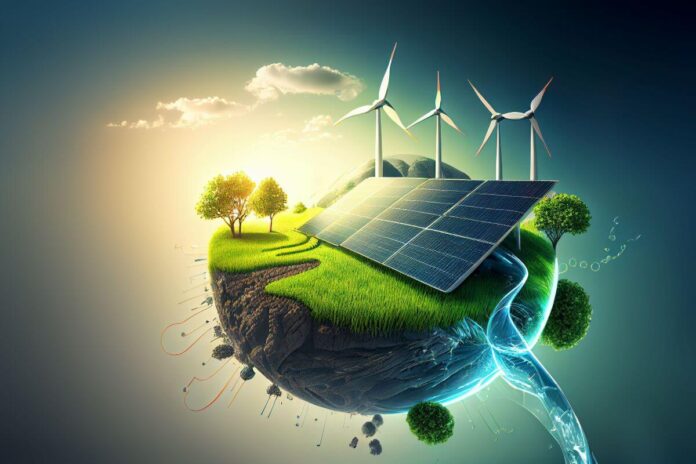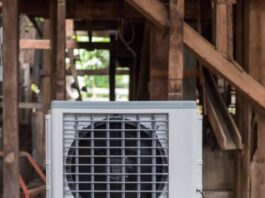In the relentless pursuit of a sustainable future, the energy landscape is undergoing a revolutionary transformation. This blog delves into the intricate realm of sustainable energy solutions, exploring the cutting-edge technologies, eco-conscious practices, and the seismic shift toward a greener, more resilient global energy ecosystem.
The Catalyst of Change: Embracing Renewable Resources
Solar Power Illumination
At the forefront of sustainable energy solutions, solar power emerges as a beacon of clean energy. Harnessing the abundant energy radiating from the sun, solar panels convert sunlight into electricity, providing a renewable and eco-friendly alternative. The scalability of solar technology ensures its adaptability from small residential installations to vast solar farms.
Wind Energy’s Momentum
Wind energy, a stalwart in the renewable energy portfolio, harnesses the kinetic power of the wind to generate electricity. Wind turbines, strategically positioned onshore and offshore, capture the wind’s force, producing a steady and sustainable energy supply. Advances in turbine design and offshore installations elevate wind energy’s prominence in the quest for sustainability.
Smart Grids: Revolutionizing Energy Distribution
Decentralized Power Networks
The advent of smart grids marks a paradigm shift in energy distribution. Decentralized power networks, empowered by smart technologies, allow for bidirectional energy flow. This innovation enables energy consumers to become prosumers, producing and sharing surplus energy back into the grid. Smart grids enhance efficiency, resilience, and sustainability in energy distribution.
Demand Response Systems
Intelligent demand response systems further optimize energy consumption. These systems leverage real-time data and automation to adjust energy usage based on demand fluctuations. By promoting flexible energy consumption patterns, demand response systems contribute to a more balanced and sustainable electricity grid.
Energy Storage: Unleashing the Power of Resilience
Battery Technologies Revolution
Energy storage plays a pivotal role in the integration of renewable energy. Advanced battery technologies, such as lithium-ion batteries, store excess energy generated during peak production periods. This stored energy can then be deployed during periods of low renewable energy generation, ensuring a continuous and reliable power supply.
Innovations in Grid-Scale Storage
Grid-scale storage solutions, including pumped hydro storage and emerging technologies like flow batteries, enhance the resilience of energy infrastructure. These innovations provide large-scale storage capacity, allowing for the smooth integration of intermittent renewable sources into the power grid.
Sustainable Transportation: Electrifying the Future
Electrification of Vehicles
The transportation sector undergoes a green revolution with the electrification of vehicles. Electric cars, buses, and bicycles powered by sustainable energy sources contribute to reduced carbon emissions. The evolution of charging infrastructure further supports the widespread adoption of electric vehicles, shaping a more sustainable future for transportation.
Hydrogen-Powered Mobility
Hydrogen emerges as a promising alternative for sustainable transportation. Fuel cell vehicles, which utilize hydrogen to generate electricity, offer zero-emission mobility. The development of a hydrogen infrastructure and advancements in fuel cell technology position hydrogen as a versatile and eco-friendly solution in the transportation sector.
Energy-Efficient Buildings: Redefining Urban Landscapes
Net-Zero Energy Buildings
In urban planning, the concept of net-zero energy buildings gains traction. These buildings generate as much energy as they consume, often incorporating solar panels, energy-efficient designs, and smart technologies. Net-zero energy buildings not only reduce carbon footprints but also set the standard for sustainable urban development.
Green Building Certifications
Green building certifications, such as LEED (Leadership in Energy and Environmental Design), guide the construction industry toward sustainable practices. These certifications promote energy efficiency, renewable energy use, and environmentally conscious building materials, fostering a more sustainable and resilient built environment.
Challenges and Collaborative Solutions
Intermittency and Reliability Challenges
While sustainable energy solutions showcase immense potential, challenges remain, particularly regarding the intermittency of renewable sources. Collaborative efforts between governments, industries, and research institutions aim to address these challenges through advancements in energy storage, grid technologies, and policy frameworks.
Global Collaboration for Impact
The pursuit of sustainable energy solutions requires global collaboration. International initiatives, agreements, and collaborative research efforts amplify the impact of sustainable energy solutions. By sharing knowledge, technology, and resources, the global community can accelerate the transition to a sustainable and resilient energy future.
Microgrids: Empowering Local Resilience
Localized Energy Independence
Microgrids emerge as a transformative force, fostering energy independence at the local level. These smaller-scale, self-sufficient grids integrate renewable energy sources, storage systems, and smart technologies. In times of broader grid disruptions, microgrids provide resilience, ensuring a continuous power supply to critical infrastructure and communities.
Community-Led Energy Initiatives
Empowering communities through decentralized energy solutions becomes a cornerstone of sustainable energy. Community-led projects, such as shared solar installations and local wind farms, redefine the relationship between energy producers and consumers. This democratization of energy production enhances resilience and sustainability on a community scale.
Artificial Intelligence (AI): Optimizing Energy Efficiency
AI-Driven Energy Management
The integration of artificial intelligence revolutionizes energy management systems. AI algorithms analyze real-time data, optimizing energy consumption patterns, and predicting demand fluctuations. Smart buildings, industries, and cities leverage AI to minimize waste, enhance efficiency, and contribute to the overall reduction of energy footprints.
Predictive Maintenance in Energy Infrastructure
AI-driven predictive maintenance transforms the reliability of energy infrastructure. Sensors and data analytics predict potential equipment failures, allowing for proactive maintenance interventions. This not only increases the lifespan of energy assets but also reduces downtime and contributes to overall energy efficiency.
Ocean Energy: Tapping into Blue Horizons
Wave and Tidal Energy Harvesting
The vast potential of ocean energy comes to the forefront, with innovations in wave and tidal energy harvesting. These technologies capture the kinetic energy from ocean currents and tides, offering a consistent and predictable source of renewable energy. Ocean energy systems contribute to a diversified and sustainable energy portfolio.
Offshore Wind Expansion
The expansion of offshore wind farms extends the reach of renewable energy into blue horizons. Offshore wind projects, leveraging stronger and more consistent winds, contribute significantly to energy production. Innovations in floating wind turbines further unlock the potential of previously untapped offshore locations.
Circular Economy: End-of-Life Solutions
Closed-Loop Recycling in Energy Infrastructure
The principles of the circular economy gain prominence in the energy sector. Closed-loop recycling initiatives ensure that end-of-life components, such as solar panels and wind turbine blades, are repurposed or recycled. This commitment to circularity minimizes waste and maximizes resource efficiency within the renewable energy supply chain.
Second-Life Battery Applications
As energy storage technologies advance, the concept of second-life battery applications gains traction. Used batteries from electric vehicles find new life as stationary storage units. This dual-purpose utilization extends the lifespan of batteries and addresses environmental concerns associated with their disposal.
Conclusion: A Sustainable Energy Renaissance
In conclusion, the journey towards sustainable energy solutions marks a renaissance in how societies generate, distribute, and consume power. From the sun and wind to cutting-edge technologies, the pursuit of sustainability reshapes the energy landscape. As innovation continues to drive progress, sustainable energy solutions stand as a testament to humanity’s commitment to a greener, more resilient future.



